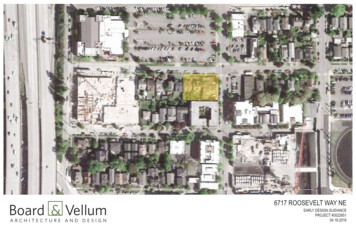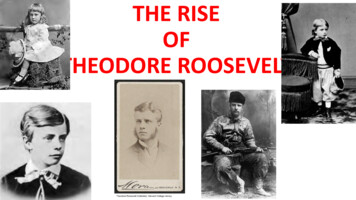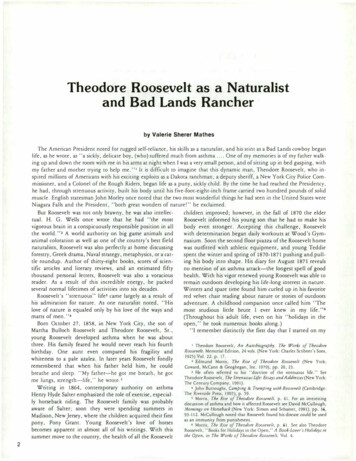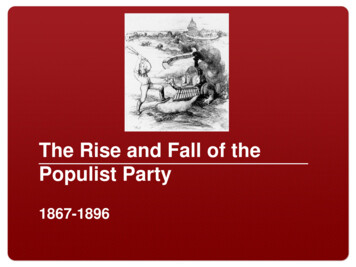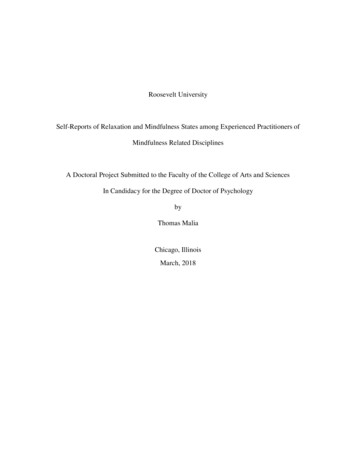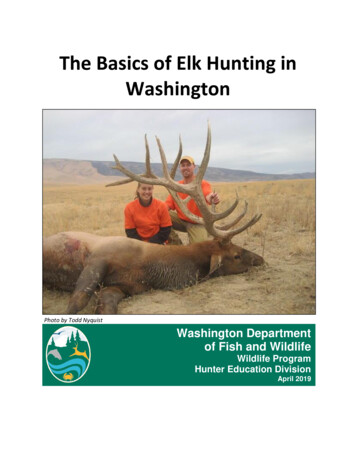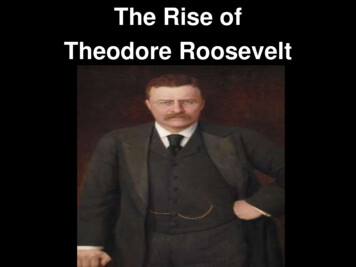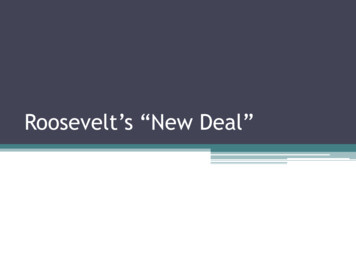
Transcription
Roosevelt’s “New Deal”
Georgia Standards SSUSH18 The student will describe FranklinRoosevelt’s New Deal as a response to the depressionand compare the ways governmental programs aidedthose in need. a. Describe the creation of the Tennessee Valley Authority as aworks program and as an effort to control the environment. b. Explain the Wagner Act and the rise of industrial unionism. c. Explain the passage of the Social Security Act as a part ofthe second New Deal. d. Identify Eleanor Roosevelt as a symbol of social progressand women’s activism. e. Identify the political challenges to Roosevelt’s domestic andinternational leadership; include the role of Huey Long, the“court packing bill,” and the Neutrality Act.
Roosevelt Victorious In 1932
The New Deal Roosevelt used his first 100 days in office to implementhis new ideas The New Deal centered around 3 key ideas: Relief: the concept of helping people immediately toget out of the misery of the Depression Recovery: aimed at helping the business communityand restarting the economy Reform: trying to change the country so that adepression could never again have significant effectson the country
Tennessee Valley Authority (TVA) One of the first programs of the NewDeal was a works program called theTennessee Valley Authority (TVA). The TVA created jobs in a portion of therural South called the Tennessee Valley. Some of these jobs entailed constructingpower plants that brought electricity tothe region. Other jobs involved the creation andconstruction of a series of dams. These dams were used to control theenvironment and prevent flooding,which were responsible for destroyingnumerous acres of Southern farmland.
“Song of the South” - Alabama Song, song of the southSweet potato pie and I shut my mouthGone, gone with the windThere ain't nobody looking back again
Well somebody told us Wall Street fellBut we were so poor that we couldn't tellCotton was short and the weeds were tallBut Mr. Roosevelt's a gonna save us all
Well momma got sick and daddy got downThe county got the farm and they moved to townPapa got a job with the TVAHe bought a washing machine and then aChevrolet
Song, song of the southSweet potato pie and I shut my mouthGone, gone with the windThere ain't nobody looking back again
Cotton on the roadside, cotton in the ditchWe all picked the cotton but we never got richDaddy was a veteran, a southern DemocratThey ought to get a rich man to vote like that
Cotton on the roadside, cotton in the ditchWe all picked the cotton but we never got richDaddy was a veteran, a southern DemocratThey ought to get a rich man to vote like that
Wagner Act and Industrial Unionism In 1935, Congress passed a NationalLabor Relations Act, called theWagner Act, which legalizedcollective bargaining. It outlawed spying on union activitiesand blacklisting. The Wagner Act caused a greatincrease in union membership. The act set up a National LaborRelations Board (NLRB) to enforce itsrules. In 1938, a Fair Labor Standards Actbanned child labor and set up aminimum wage.
Roosevelt’s Second New Deal Most of the public remainedbehind Roosevelt. In 1935, FDR launched theSecond New Deal. It included more socialwelfare benefits, strictercontrols over business,stronger support for unions,and higher taxes on the rich.
Social Security In 1935, Congress passedthe Social Security Act The act established aSocial Security System This system offered 3types of insurance:1. Old-age pensions andsurvivors’ benefits.2. Unemploymentinsurance.3. Aid for dependentchildren, the blind, andthe physically disabled.
Eleanor Roosevelt as a Symbol FDR’s most important colleaguewas his wife, Eleanor Roosevelt. The public got used to herunconventional style, and manycame to admire her for herenthusiasm, humanity, andidealism. She became the face ofRoosevelt’s government due tohis disability. She also became a symbol ofsocial progress and women’sactivism in America.
Huey Long Opposes the New Deal He was the Democraticgovernor of Louisiana. He disagreed withRoosevelt’s plans and ideas. He proposed redistributingthe wealth of America to tryand curb the poverty andcrime of the GreatDepression. He was assassinated in 1935at the age of 42.
The Court-Packing Scandal Because the Supreme Court hadoverturned some of FDR’s plans,he wanted to change the SupremeCourt to help his goals. FDR wanted the number of judgeschanged from 9 to 15 (to "pack thecourt"). There was great opposition to thisidea. In essence, he wanted to changethe Constitution, altering thesystem of checks and balances. Plan would give both thePresident and the Supreme Courtmore power than Congress.
The Neutrality Acts Still weary from USinvolvement in WWI, manyin the US wanted to stayOUT of WWII. The US passed NeutralityActs in 1935, 1936 and 1937that prohibited the US fromselling arms to anybelligerent nation. Roosevelt didn’t like thatthese acts prevented the USfrom helping its allies.
But we were so poor that we couldn't tell Cotton was short and the weeds were tall But Mr. Roosevelt's a gonna save us all Well momma got sick and daddy got down The county got the farm and they moved to town Papa got a job with the TVA . We all picked the cotton but we never got rich Daddy was a veteran, a southern .
